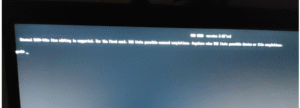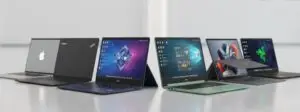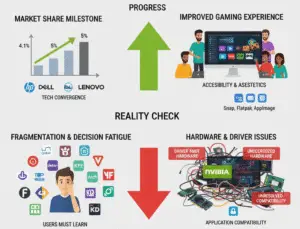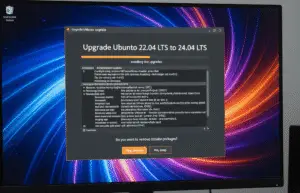
Internet of Things (IoT) in 2025: A Connected World Made Simple

Introduction
Imagine your alarm clock waking you up, then telling your coffee maker to start brewing. Meanwhile, your thermostat adjusts to the perfect temperature, and your fridge orders milk because it’s running low. This isn’t science fiction—it’s the Internet of Things (IoT), and by 2025, it will be even smarter and more widespread.
IoT refers to everyday objects connected to the internet, sharing data to make life easier. From smart homes to healthcare, agriculture to cities, IoT is changing how we live and work. Let’s break it down in simple terms, with real-world examples and a look at what’s coming next.
What is the Internet of Things (IoT)?
IoT is a network of physical devices (like sensors, appliances, and machines) that collect and exchange data over the internet. These “smart” devices can:
Monitor (e.g., a fitness tracker counting your steps).
Control (e.g., turning off lights with your phone).
Automate (e.g., a sprinkler system watering plants when the soil is dry).
How Does IoT Work?
Sensors & Devices – Collect data (temperature, motion, location, etc.).
Connectivity – Send data via Wi-Fi, Bluetooth, or 5G.
Cloud Processing – Data is analyzed in real-time.
User Interface – You get alerts or control devices via an app.
Example: A smart thermostat (like Nest) learns your schedule and adjusts heating/cooling to save energy.
Key Benefits of IoT in 2025
1. Smarter Homes
IoT turns houses into “smart homes“ where devices work together seamlessly.
Voice assistants (Alexa, Google Home) control lights, locks, and TVs.
Smart security cameras (like Ring) send alerts if they detect intruders.
Energy savings – Smart plugs turn off unused devices automatically.
Example: If you forget to lock the door, your phone can do it remotely.
2. Better Healthcare (Wearables & Remote Monitoring)
IoT helps doctors track patients in real-time, even from home.
Smartwatches (Apple Watch, Fitbit) monitor heart rate and detect falls.
Connected inhalers remind asthma patients to take medication.
Remote patient monitoring reduces hospital visits for seniors.
Example: In 2025, a diabetic patient’s glucose monitor could automatically alert their doctor if levels are dangerous.
3. Efficient Cities (Smart Traffic, Waste Management, Energy)
IoT helps cities run smoother and reduce waste.
Smart traffic lights adjust timing based on real-time traffic flow.
Waste bins with sensors alert garbage trucks when full.
Smart streetlights dim when no one is around, saving electricity.
Example: Barcelona uses IoT sensors to monitor parking, reducing congestion.
4. Smarter Farming (Precision Agriculture)
Farmers use IoT to grow more food with less waste.
Soil sensors measure moisture and nutrients, telling farmers when to water.
Drones scan fields for pests or crop diseases.
Smart irrigation systems save water by targeting dry areas.
Example: John Deere’s smart tractors use IoT to optimize planting and harvesting.
5. Improved Factories & Supply Chains
IoT helps businesses track goods and prevent breakdowns.
Predictive maintenance – Machines alert workers before they fail.
RFID tags track products from factory to store shelves.
Autonomous robots in warehouses speed up deliveries (like Amazon’s Kiva robots).
Example: Tesla’s factories use IoT sensors to monitor assembly lines in real time.
Challenges Facing IoT in 2025
1. Security Risks (Hacking & Privacy Concerns)
More connected devices mean more hacking risks.
Weak passwords on smart cameras can let hackers spy on homes.
Data leaks – Personal health or location data could be stolen.
Solution: Stronger encryption and regular software updates.
2. Compatibility Issues (Different Brands Don’t Always Work Together)
Not all smart devices “talk” to each other.
A Google Home might not control an Apple HomeKit device.
Solution: New standards (like Matter) aim to unify smart home tech.
3. High Costs & Energy Use
Some IoT devices are expensive.
Millions of sensors need power, increasing energy demands.
Solution: Solar-powered sensors and better battery tech.
Future of IoT in 2025 & Beyond
1. 5G Will Supercharge IoT
Faster, more reliable internet means:
Real-time responses (self-driving cars, remote surgery).
More devices connected at once (smart cities with millions of sensors).
2. AI + IoT = Smarter Automation
AI-powered cameras can recognize faces or detect accidents.
Smart fridges may suggest recipes based on what’s inside.
3. Expansion in Healthcare & Wearables
Smart contact lenses could monitor glucose levels.
IoT-enabled pills may track medication intake.
4. Growth of Smart Cities
More cities will use IoT for pollution control, energy savings, and safer streets.
Conclusion
The Internet of Things is making our world smarter, safer, and more efficient. By 2025, we’ll see even more innovations—from AI-powered homes to self-healing infrastructure. However, security and privacy remain big challenges that need solving.
One thing is clear: IoT is here to stay, and it’s changing how we interact with technology every day.




